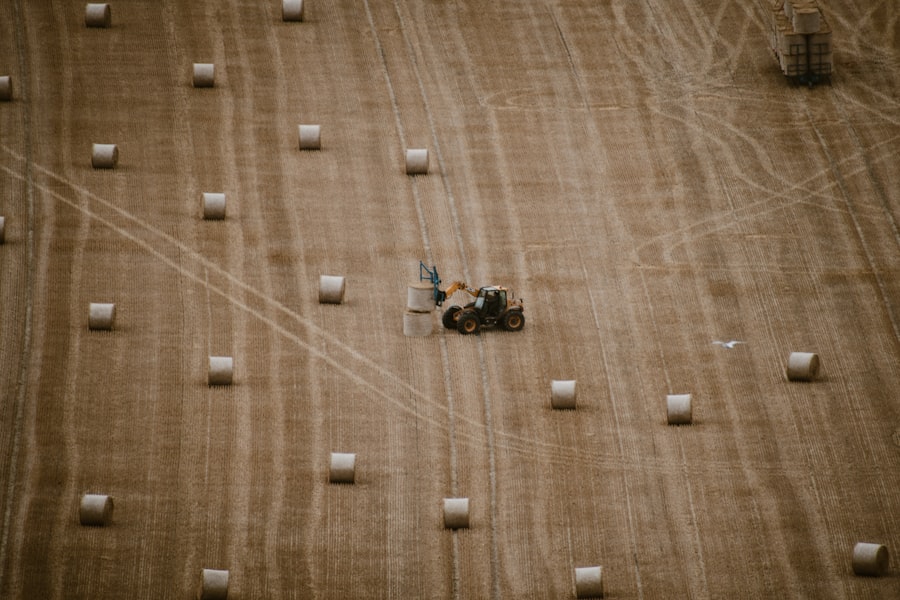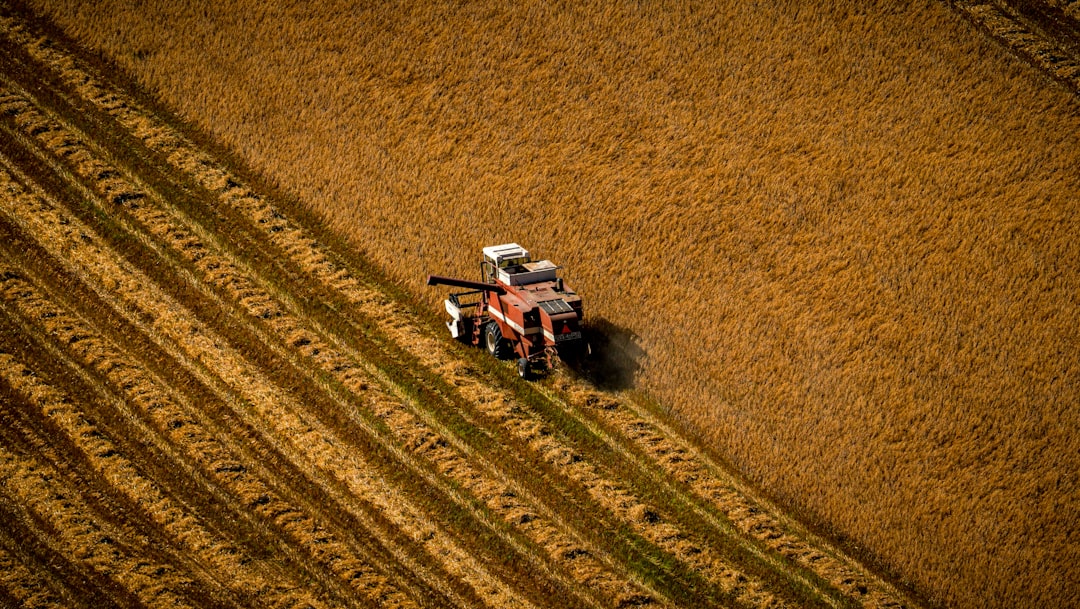Moral hazard is a concept that arises when one party is insulated from risk and, as a result, may engage in riskier behavior than they otherwise would. In the context of agriculture, this phenomenon can manifest in various ways, particularly when farmers rely on government support or insurance programs. When you consider the implications of moral hazard, it becomes clear that it can lead to unintended consequences that affect not only individual farmers but also the broader agricultural landscape.
For instance, if farmers know they will be compensated for crop failures due to adverse weather conditions, they may be less inclined to invest in preventive measures or sustainable practices. As you delve deeper into the intricacies of moral hazard, it’s essential to recognize how it can distort decision-making processes. Farmers might prioritize short-term gains over long-term sustainability, knowing that they have a safety net to fall back on.
This behavior can lead to overproduction, environmental degradation, and a lack of innovation in agricultural practices. Understanding moral hazard is crucial for developing effective policies that encourage responsible farming while minimizing the risks associated with government intervention.
Key Takeaways
- Moral hazard in agriculture refers to the increased risk-taking behavior of farmers when they are protected from the full consequences of their actions.
- Subsidies can lead to overproduction and environmental degradation, as farmers may not bear the full cost of their production decisions.
- Crop insurance can create moral hazard by reducing the financial risk for farmers, leading to riskier agricultural practices.
- Government intervention in agriculture can have unintended consequences, such as distorting market prices and discouraging innovation.
- Moral hazard in agriculture can contribute to environmental degradation through excessive use of chemicals and unsustainable farming practices.
The Impact of Subsidies on Agricultural Practices
Subsidies play a significant role in shaping agricultural practices, often with the intention of stabilizing markets and ensuring food security. However, when you examine the impact of these financial supports, it becomes evident that they can inadvertently contribute to moral hazard. For example, if you are a farmer receiving subsidies for certain crops, you may be less inclined to diversify your planting strategies or invest in sustainable practices.
The safety net provided by subsidies can create a false sense of security, leading to complacency and a lack of innovation. Moreover, subsidies can distort market signals, encouraging overproduction of specific crops while neglecting others that may be more environmentally friendly or economically viable in the long run. This reliance on government support can create a cycle where farmers become dependent on subsidies rather than adapting to changing market conditions or consumer preferences.
As you consider the broader implications of subsidies, it’s essential to recognize how they can shape not only individual farming practices but also the overall health of the agricultural sector.
The Role of Crop Insurance in Creating Moral Hazard

Crop insurance is designed to protect farmers from financial losses due to unforeseen events such as natural disasters or pest infestations. While this safety net is crucial for maintaining stability in the agricultural sector, it can also contribute to moral hazard. When you have crop insurance, you might feel less compelled to take proactive measures to mitigate risks, such as investing in better irrigation systems or adopting sustainable farming practices.
The assurance of compensation can lead to a mindset where risk is not adequately managed. Additionally, the structure of crop insurance programs can sometimes incentivize farmers to take on riskier practices. For instance, if you know that your insurance will cover losses from planting high-risk crops, you may choose to do so without fully considering the potential consequences.
This behavior not only affects your farm’s sustainability but can also have ripple effects throughout the agricultural ecosystem. Understanding the nuances of crop insurance is vital for developing strategies that encourage responsible farming while still providing necessary support.
The Consequences of Government Intervention in Agriculture
| Consequences | Impact |
|---|---|
| Price distortion | Government intervention can lead to artificial price distortions in the agricultural market. |
| Market inefficiency | Intervention can result in market inefficiencies, leading to misallocation of resources. |
| Reduced innovation | Government intervention may stifle innovation and technological advancements in agriculture. |
| Dependency | Intervention can create dependency among farmers and distort their decision-making. |
| Environmental impact | Government policies may have unintended environmental consequences in agriculture. |
Government intervention in agriculture often aims to stabilize markets and ensure food security; however, it can lead to unintended consequences that exacerbate moral hazard. When you consider the various forms of intervention—such as price supports, subsidies, and regulations—it becomes clear that these measures can create an environment where farmers feel shielded from market realities. This insulation can lead to complacency and a lack of innovation, as farmers may rely on government support rather than adapting to changing conditions.
Smaller farms may struggle to compete with larger operations that benefit more significantly from subsidies and support programs. As you reflect on these dynamics, it’s essential to recognize how government policies can inadvertently perpetuate cycles of dependency and hinder the development of a resilient agricultural system.
Striking a balance between necessary support and encouraging self-sufficiency is crucial for fostering a sustainable agricultural landscape.
The Relationship Between Moral Hazard and Environmental Degradation
The connection between moral hazard and environmental degradation is particularly concerning in agriculture.
For instance, if you are aware that your losses will be covered by insurance, you might be less inclined to adopt sustainable farming practices that protect soil health and biodiversity.
This behavior can lead to overuse of chemical fertilizers and pesticides, soil erosion, and depletion of water resources. As you contemplate the broader environmental impact of moral hazard in agriculture, it’s essential to recognize that these practices not only affect individual farms but also contribute to larger ecological issues such as climate change and loss of biodiversity. Addressing moral hazard is crucial for promoting environmentally responsible farming practices that ensure the health of our planet for future generations.
The Ethical Dilemma of Agricultural Practices

The ethical dilemmas surrounding agricultural practices are complex and multifaceted. As you navigate this landscape, it’s important to consider how moral hazard influences decision-making at various levels. Farmers often face pressures to maximize yields and profits, which can lead them to prioritize short-term gains over ethical considerations such as environmental sustainability and animal welfare.
When you factor in government support and insurance programs, the ethical implications become even more pronounced. You may find yourself grappling with questions about responsibility and accountability in agriculture. Should farmers be held accountable for their environmental impact if they are shielded from financial losses?
How do we balance the need for food security with ethical considerations? These questions highlight the importance of fostering a culture of responsibility within the agricultural sector, where ethical decision-making is prioritized alongside economic viability.
The Influence of Moral Hazard on Food Security
Food security is a pressing global issue that is intricately linked to moral hazard in agriculture. When farmers engage in riskier practices due to the safety nets provided by government support or insurance programs, it can undermine the very stability these measures aim to create. If you are a farmer who feels secure in your financial backing, you may overlook essential practices that contribute to long-term food security, such as crop diversification and sustainable land management.
Furthermore, moral hazard can lead to fluctuations in food supply and prices, impacting consumers and communities reliant on stable access to food. As you consider the broader implications of moral hazard on food security, it becomes clear that addressing this issue is vital for ensuring a resilient agricultural system capable of meeting future challenges. Promoting responsible farming practices and encouraging self-sufficiency among farmers are essential steps toward enhancing food security for all.
The Need for Ethical Guidelines in Agricultural Decision Making
Given the complexities surrounding moral hazard in agriculture, there is an urgent need for ethical guidelines that inform decision-making processes within the sector. As you reflect on this necessity, consider how clear ethical frameworks can help guide farmers toward responsible practices that prioritize sustainability and community well-being. These guidelines should address not only environmental concerns but also social and economic factors that influence agricultural decisions.
By establishing ethical standards, you can encourage farmers to take a holistic approach to their practices—one that considers the long-term implications of their actions on both their farms and the broader community. This shift toward ethical decision-making can foster a culture of responsibility within agriculture, ultimately leading to more sustainable practices that benefit both farmers and society as a whole.
The Role of Technology in Mitigating Moral Hazard in Agriculture
Technology has the potential to play a transformative role in addressing moral hazard within agriculture. As you explore this intersection between innovation and farming practices, consider how advancements such as precision agriculture, data analytics, and sustainable farming technologies can empower farmers to make informed decisions. By leveraging technology, you can enhance risk management strategies and promote more responsible farming practices.
For instance, precision agriculture allows farmers to monitor soil health and crop conditions more accurately, enabling them to make data-driven decisions that minimize environmental impact while maximizing yields. Additionally, technology can facilitate better communication between farmers and consumers, fostering transparency and accountability within the agricultural sector. Embracing technological solutions is essential for mitigating moral hazard and promoting sustainable practices that benefit both farmers and the environment.
The Importance of Education and Awareness in Addressing Moral Hazard
Education and awareness are critical components in addressing moral hazard within agriculture. As you consider the role of education in shaping farming practices, think about how increased knowledge about sustainable methods and responsible decision-making can empower farmers to make choices that benefit both their operations and the environment. By fostering a culture of learning within the agricultural community, you can encourage innovation and adaptability.
Moreover, raising awareness about the implications of moral hazard can help farmers recognize the importance of balancing short-term gains with long-term sustainability. Workshops, training programs, and community initiatives can serve as valuable resources for educating farmers about best practices and ethical considerations in agriculture. By prioritizing education and awareness, you can contribute to a more resilient agricultural sector capable of navigating future challenges.
Strategies for Reducing Moral Hazard in Agriculture
To effectively reduce moral hazard in agriculture, it’s essential to implement targeted strategies that promote responsible decision-making among farmers. One approach could involve restructuring subsidy programs to incentivize sustainable practices rather than encouraging overproduction or dependency on government support. By aligning financial assistance with environmentally friendly practices, you can create an environment where farmers are motivated to adopt responsible methods.
Additionally, enhancing crop insurance programs by incorporating risk management education can empower farmers to make informed decisions about their operations. Providing resources that emphasize proactive risk mitigation strategies will encourage a shift away from reliance on safety nets toward more sustainable farming practices. By implementing these strategies, you can help cultivate a more resilient agricultural sector that prioritizes both economic viability and environmental stewardship.
In conclusion, addressing moral hazard in agriculture requires a multifaceted approach that encompasses ethical considerations, technological advancements, education, and targeted policy interventions. By understanding the complexities surrounding this issue and implementing effective strategies, you can contribute to a more sustainable agricultural landscape that benefits both farmers and society as a whole.
Moral hazard in agriculture is a significant concern, particularly when it comes to the implementation of insurance schemes and government subsidies. These mechanisms, while designed to support farmers, can sometimes lead to unintended consequences where farmers might take on riskier practices, knowing they are protected against potential losses. An insightful article that delves into the broader implications of financial strategies and risk management in agriculture can be found on How Wealth Grows. This article explores various economic principles that influence decision-making in the agricultural sector. For more information, you can read the full article by visiting How Wealth Grows.
FAQs
What is moral hazard in agriculture?
Moral hazard in agriculture refers to the situation where farmers may take on more risk or engage in riskier behavior because they know they are protected by insurance or government subsidies. This can lead to inefficient use of resources and increased costs for the insurance or subsidy providers.
How does moral hazard affect the agricultural industry?
Moral hazard can lead to increased costs for insurance providers and government subsidy programs, as well as inefficient use of resources by farmers. It can also distort market signals and lead to overproduction or excessive risk-taking.
What are some examples of moral hazard in agriculture?
Examples of moral hazard in agriculture include farmers taking on more debt or engaging in riskier farming practices because they know they are protected by government subsidies or insurance programs. This can lead to overproduction, environmental degradation, and increased costs for the providers of these programs.
How can moral hazard be mitigated in agriculture?
Moral hazard in agriculture can be mitigated through measures such as risk-based pricing for insurance, requiring farmers to take certain risk management measures, and implementing policies that encourage sustainable and responsible farming practices. Additionally, increasing transparency and accountability in subsidy programs can help reduce moral hazard.
